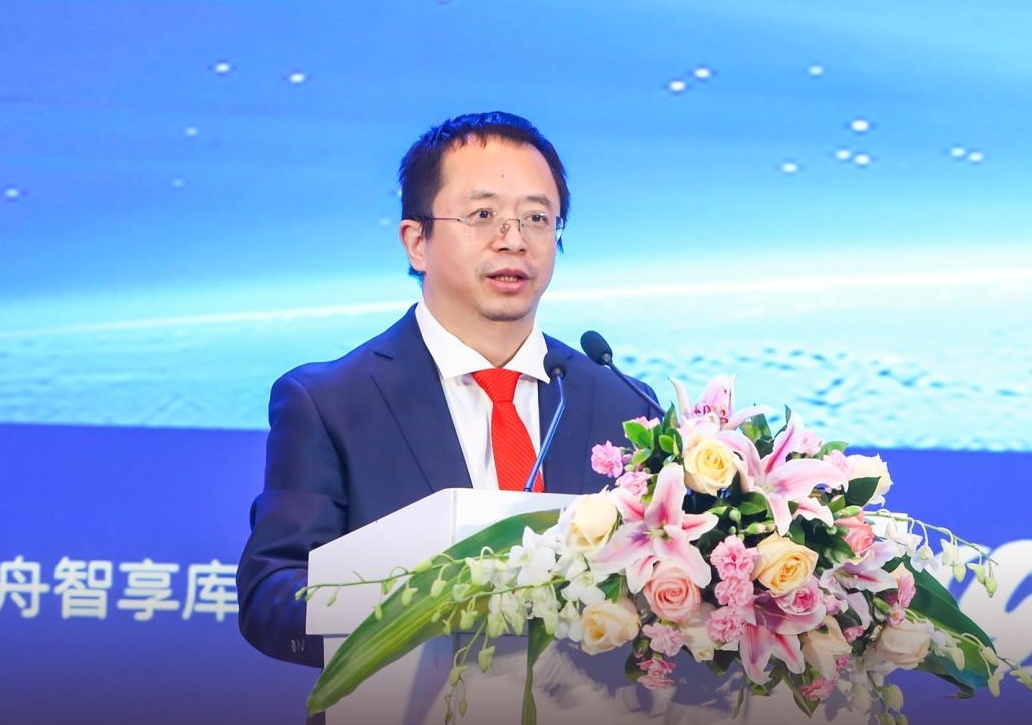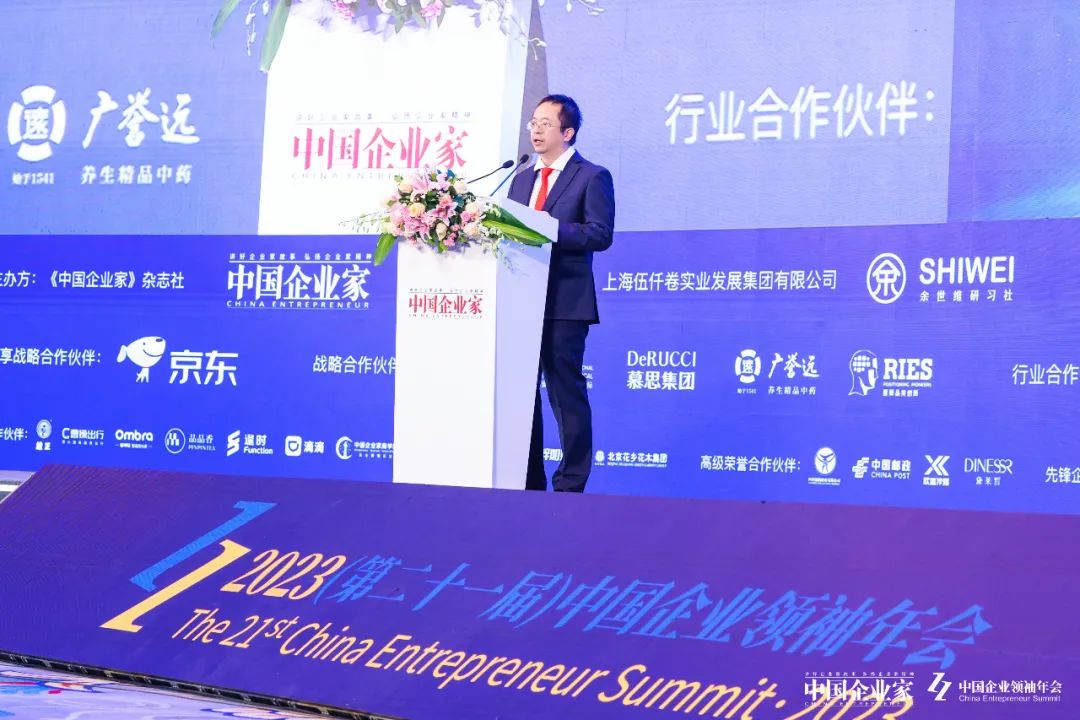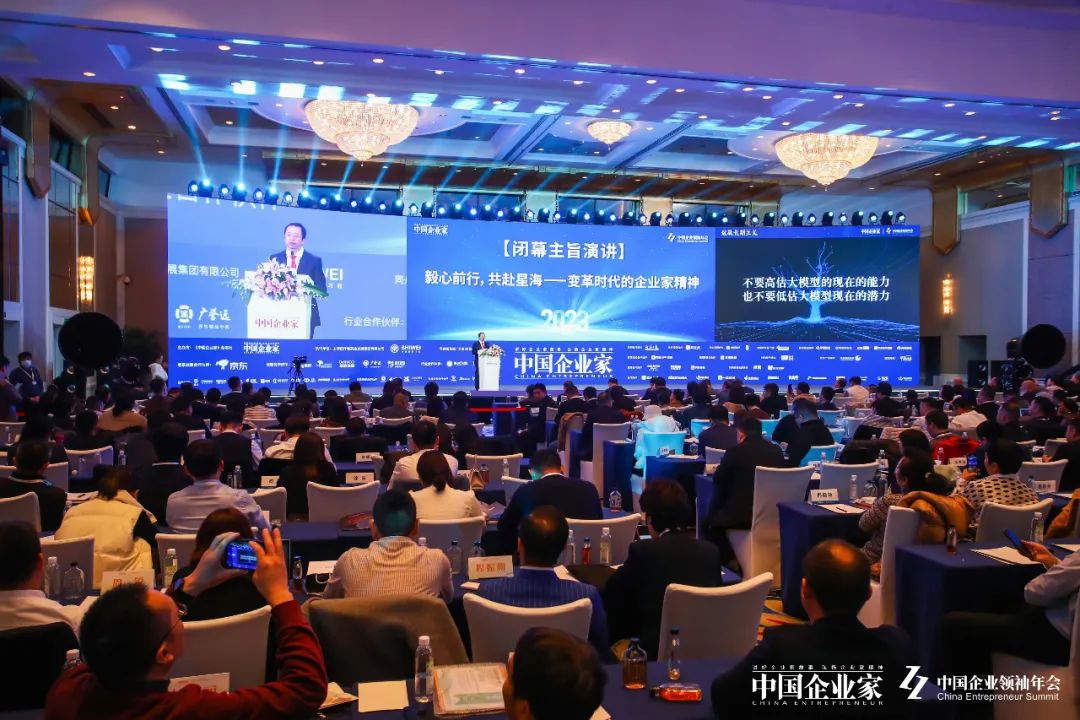Zhou Hongyi: Developing Large Models Requires AI Faith
-

On December 9-10, the '21st China Enterprise Leaders Annual Meeting,' hosted by China Entrepreneur magazine, was grandly held. During the closing speech session on December 10, Zhou Hongyi, founder, chairman, and CEO of 360 Company, delivered a keynote address.
Core viewpoints are as follows:
-
Do not overestimate the current capabilities of large models, but also do not underestimate their future development potential.
-
All entrepreneurs present today are intelligent, but we cannot connect our brains for collective thinking. Large models can achieve this - with sufficient investment in NVIDIA GPUs, chips, memory, and computing power, their capabilities can continuously improve.
-
The emergence of large models is comparable to the birth of the internet in 1995 and personal computers in 1982. American investors now exclusively focus on AI-related projects, disregarding companies without AI concepts, functionalities, or components.
-
China's opportunity lies in the industrialization, sector-specific application, vertical integration, and deep customization of large models.
-
Establish AI faith: Believe that AI represents genuine artificial intelligence, that it's a technology at the scale of industrial revolution, that it will reshape all businesses, and that companies and individuals failing to embrace AI will be eliminated.
-
Three critical questions for going all in AI:
- Upward and downward alignment: Is everyone within the organization using AI?
- Internal impact: What happens when internal business processes are transformed by AI?
- External impact: How will products and services be enhanced by AI?
-
The future of companies will be measured by their "AI content": how many business processes are optimized, empowered, or transformed by AI.

Below is an excerpt from Zhou Hongyi's speech (edited for brevity):
When it comes to entrepreneurial spirit, first, there is always innovation, seeking new opportunities in the market through innovation; second, persistently adhering to an innovative endeavor with a long-term perspective.
The most innovative development in 2023 is the breakthrough in AI large models. Large models are not just the domain of a few companies specializing in them; they will integrate into various scenarios across our businesses. The future combination of these scenarios with large models will bring many benefits.
The theme of this conference is 'Salute to Long-termism.' Why did large models and OpenAI emerge in the United States? The technologies used by OpenAI are all open-source. It's somewhat embarrassing to admit that many entrepreneurs in China, including myself, still lack a long-term perspective. We tend to use AI models more pragmatically to solve immediate issues like ad click-through rates and other pressing problems.
OpenAI truly embodies long-term thinking. They pondered whether humans could create general artificial intelligence and whether it was possible to train all human knowledge into a large model. In fact, such large models have existed before—Google and Facebook had them—but no one had ever considered training all human knowledge into a single large model. OpenAI took the leap, and through sheer scale and effort, they succeeded in embedding vast amounts of human knowledge into GPT, achieving remarkable results.
Even a year after ChatGPT's debut, many still doubt whether large models represent a genuine breakthrough or true artificial intelligence. Having worked on search engines and natural language processing for two decades, I can attest that this time, the breakthrough is real. Large models mark a turning point in general artificial intelligence because for the first time, computers can comprehend, store, and reason with all human knowledge, achieving a complete understanding of human language.
Why is language so crucial? The fundamental difference between humans and animals is our ability to describe the world through language. Once machines understand human language and can converse fluently with us, it means they also grasp a model of the world. On this foundation, many challenges will naturally be resolved.
Before this breakthrough, what we called artificial intelligence was more like artificial stupidity, which many people have suffered from. For example, when you struggle with your smart speaker or Apple's Siri, it fails to understand slightly complex queries due to the lack of prior knowledge reserves. This large model has truly achieved a breakthrough, and I believe this is a success story of long-termism.
Many people have gone to the other extreme, suggesting ideas like creating a large pig farming model, showing boundless admiration and unrealistic worship for large models. I think we should neither overestimate the current capabilities of large models nor underestimate their future potential. The breakthrough in large model technology has only happened in the past few years, and there are still many shortcomings, such as the lack of knowledge in many fields. The most typical issue is that they often talk nonsense—ironically, this is also a major characteristic of humans.
I hope everyone can have a correct understanding of large models. They can now be integrated with your business, but they cannot yet fully take over operations. We must leverage their strengths while mitigating their weaknesses. Humans have been researching artificial intelligence since the 1960s, spending 60 years on it. The progress curve was relatively flat, but once it reached the inflection point of breakthrough in 2023, future development will be exponential.
All the entrepreneurs present today are highly intelligent, but we currently have no way to connect our brains together for cumulative intelligence. Large models, however, can achieve this. As long as you have the financial resources to purchase more NVIDIA GPUs, chips, memory, and computing power, their capabilities can continuously improve.
Conversely, large models are now rapidly approaching a tipping point in their ability to assimilate knowledge. To use books as a metaphor for all human-created knowledge throughout history - approximately 100 million titles - current large models have likely already learned between 50 to 80 million books. This has led many to worry that large models will soon exhaust available reading material, raising the question: how will they surpass human wisdom?
Recently, OpenAI experienced internal turmoil, with insiders claiming a breakthrough similar to AlphaGo's self-play methodology where the AI improves rapidly by competing against itself daily. ChatGPT has reportedly developed a method where AI-generated content is used to train AI systems. If true, this would create a self-sustaining cycle where the AI produces its own training data.
What is the biggest breakthrough of Google Gemini recently? What impresses me the most is its multimodal capability—it’s not just about reading text anymore; it has started to indulge in short videos like humans, understanding images, sounds, and even movies. Google owns YouTube, and with the younger generation increasingly learning through videos rather than books, Gemini’s ability to process and learn from video content is groundbreaking. Imagine it absorbing all the movies and videos humans have created, and eventually, even our daily meetings could be analyzed by machines.
This represents an exponential leap. Today’s large models, whether Gemini or GPT-4, have surpassed individual human capabilities in terms of breadth and depth of knowledge. The next step—further enhancing these abilities—is only a matter of time.
After mastering natural language understanding, the next critical capability for large models is multimodal processing. As I mentioned earlier, this includes direct handling and generation of images, sounds, and video content. Why emphasize these three directions? Many people mistakenly believe large models are only useful for language tasks, like generating web pages or powering search engines. That’s a misconception.

First, helping machines understand our world will significantly advance robotics. Previously, training robots was challenging—for instance, instructing a robot to 'fetch a cup from the first row' would fail if it lacked knowledge of what 'first row' or 'cup' meant, rendering the task unexecutable.
Second, autonomous driving has yet to achieve breakthroughs because debates focus on hardware configurations (e.g., number of cameras or LiDARs), remaining at the perception level. Human driving operates at the cognitive level—e.g., swerving around a box but stopping for a stroller. In the next year or two, large model-powered autonomous driving will enable true breakthroughs, which explains why Elon Musk simultaneously warns against AI while investing heavily in it (e.g., founding an AI company with 10,000 GPUs).
Third, the ultimate direction for large models is to become scientific research tools, assisting in biology, chemistry, material science, and physics. Only through breakthroughs in fundamental science can humanity reach for the stars.
Recently, I took advantage of the APEC momentum to visit the US for a couple of weeks after four years. Meeting numerous investors and entrepreneurs, I found that investors unanimously believe this moment is no less significant than the birth of the internet in 1995 or the advent of personal computers in 1982. Currently, American investors won't fund any project unless it's AI-related. Every entrepreneur, regardless of their business, must at least claim to leverage OpenAI's API—AI has become a mandatory element. Companies without AI integration are considered outdated.
Over meals with many friends who have lived in the US for 20-30 years and work at major corporations, I learned that their companies are stockpiling NVIDIA GPUs. Why? Because in the upcoming AI-driven industrial revolution, these are your weapons—your ticket to the future.
Americans regard this as an industrial revolution-level technological innovation. If the US bets correctly on AI as the next revolution, many existing conflicts will resolve naturally, leaving other nations' competition in an entirely different dimension.
This reminds me of the Plaza Accord, when the U.S. and Japan were competing for the top spot in the global economy. The U.S. forced Japan to sign the Plaza Accord, after which Japan never fully recovered. I’m not sure if the story is entirely accurate, but what I do see is that Japan completely missed the opportunities for industrial upgrades in the PC and internet eras. Therefore, I believe for our country, not developing is the greatest insecurity.
Regarding the positioning of large models, there’s a prevailing methodology in China that views them as operating systems, suggesting there will only be two or three dominant ones in the future. This reminds me of IBM’s claim in the mid-20th century that the world would need no more than five computers. Today, we know there’s at least one computer per person globally.
I believe the real development of large models lies in industrialization and vertical specialization. Large models will become ubiquitous, a standard feature of digital systems. You’ll undoubtedly want your own private, personalized, and vertically specialized large model that understands you better.
Qualcomm and Apple have recently released new CPUs that support the deployment of large models on computers. Within two years, I believe all connected vehicles will be equipped with onboard large models. Consequently, every large company and major government agency will have its own large model.
With the availability of open-source large models, the greatest challenge is no longer the development of these models. The most important task now is to identify suitable work scenarios, integrate them with large models, find appropriate data, and determine how to train a large model tailored to one's needs.
There are frequent concerns about large models threatening humanity. My perspective is: First, the current development of large models is far from reaching a stage where they could pose a threat. Second, during the development of large models, companies like 360 are committed to addressing the security challenges associated with them. Third, there remains a gap between China and the US in terms of large model capabilities, computational power, and understanding of these models.
Today, the capabilities of domestic large models have reached about 70% of GPT-4's level. If applied to specific vertical fields to cultivate specialized expertise, this capability is already sufficient. Therefore, China's opportunity lies in the industrialization, sector-specific application, vertical specialization, and deep customization of large models.
Today, China's national strategy is focused on digital transformation, industrial digitization, and the industrial internet. We possess the world's most comprehensive industrial chain, with the most complete range of industrial categories and abundant enterprise scenarios. Large-scale models are quintessential productivity tools, and integrating them with industries presents a significant opportunity that deserves attention.
Here, I propose a perspective: the granularity of implementation must be very fine. Currently, broadly discussing the creation of a financial or educational large-scale model is impractical and lacks direction. Only by breaking down financial scenarios into 50 specific goals or dividing educational scenarios into, say, 100 detailed scenarios can we effectively drive change in these industries.
In the U.S., three companies have profited from AI: Microsoft, Adobe, and Salesforce. They didn't use AI to create anything entirely new; instead, they enhanced their existing product lines with AI, enabling updates and upgrades.
Many still view AI as a toy, but I believe:
First, AI belief. Do you believe that strong AI is true AI? Do you believe that AI is an industrial revolution-level productivity tool? Do you believe that AI will reshape all your products and technologies? Companies and individuals who do not embrace AI may be eliminated by their AI-using peers within a few years. So, you won't be eliminated by AI itself, but by competitors who are adept at using AI.
Once you have AI belief, you should go all in on AI. Going all in on AI doesn't mean buying a lot of GPUs, hiring numerous AI experts, or pouring all your company's money into AI. I think it's more about a spiritual commitment. Your core team should consider several questions: First, unlike many other digital technologies, AI isn't just for the boss—it's something used throughout the organization, from top to bottom. Second, which parts of your internal business processes can be transformed by AI? If you don't transform them, what consequences will you face when your competitors do?
For example, Salesforce, the world's largest customer management company, quietly achieved something remarkable. After developing its own large model, it integrated AI into its customer service system to help write emails to clients, optimizing and empowering very detailed aspects of its operations.
The next question is, which functions of externally provided products and services can be enhanced by AI, and what will competitors do? After working on many cases, I feel that people shouldn't think that implementing AI means creating an entirely new product. Implementing AI isn't about building something new from scratch; it's about enhancing your company's organizational structure from top to bottom, your business processes from inside out, and your products for your customers. It doesn't necessarily require a comprehensive or drastic transformation, but rather finding small, targeted points to reduce noise.
Finally, I propose a metric called 'AI content,' which measures how many employees are familiar with AI and how many details in your products and business processes can be enhanced by AI. Initially, the AI content might not be high, but as you continuously evaluate this metric, your business will gradually be transformed by AI.
For many large enterprises, the process can be divided into three steps: First, deploy a privatized general-purpose large model and have internal employees start using it. Second, based on the general-purpose large model, identify specific scenarios to train vertical large models. Third, integrate the vertical large models with the company's digital business through an intelligent agent framework.
I believe entrepreneurial spirit is not just an empty slogan. I suggest all enterprises not only prepare to embrace AI but also innovate through AI. To develop large models in China, entrepreneurs must be the main drivers of innovation. Innovation relies on entrepreneurial spirit, which is incompatible with a passive attitude.
Entrepreneurs are different from businesspeople. Businesspeople seize opportunities when they arise and rest when there are none, while entrepreneurs must have some idealism and adhere to long-termism.
-
